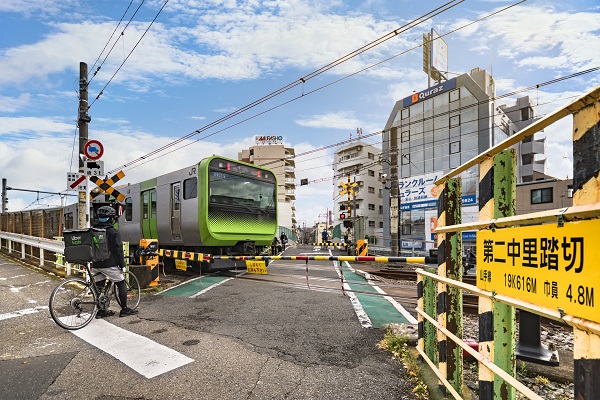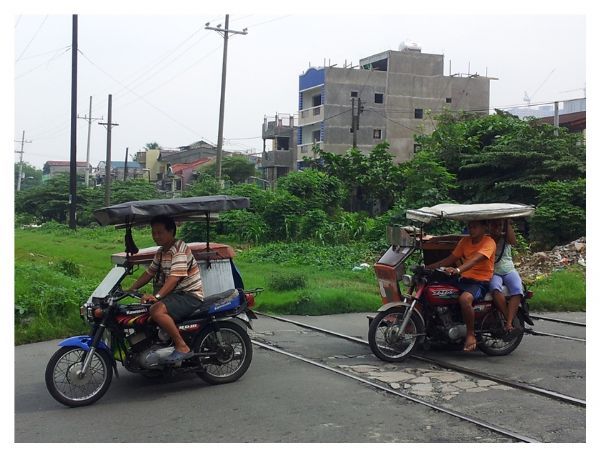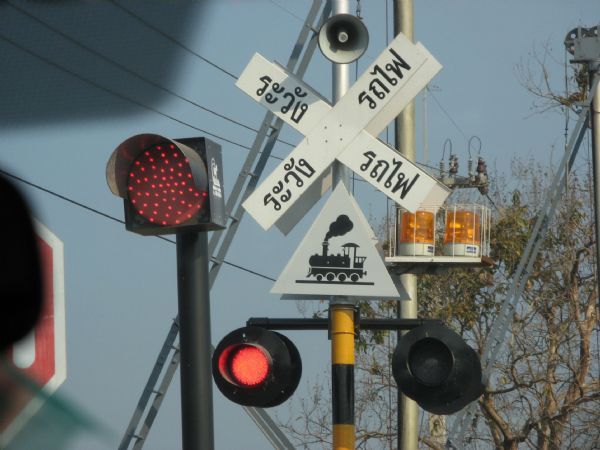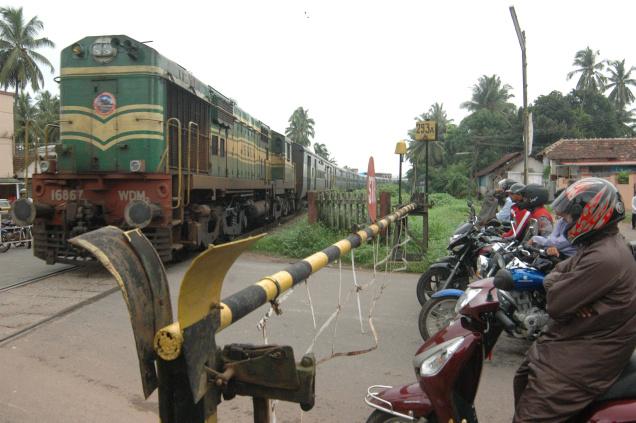





Railway Crossing
At-grade (or level) railway crossings are the most common type of rail to road intersection.
The main forms of level crossings are those where a railway intersects a main road and those where a railway intersects a side road parallel to a main road.
Level crossings can be dangerous if:
- there is poor sight distance to a signal display, or to approaching trains
- traffic control is inadequate
- vehicles queue across tracks due to congestion
- there are a lack of pedestrian facilities
- pavement is not maintained
- the railway is superelevated on curves resulting in uneven road surface
- signalling equipment is located too close to the road.
The risk at level crossings varies with the types of railway, train speed, train frequency, and crossing layout. Higher priority for upgrading and more sophistication of control measures will be needed for trunk railways, major commuter railways, busy roads, high volume of trucks and buses, and unfavourable crossing layouts.
Level crossings can be controlled through either ‘passive’ or ‘active’ systems. Passive control systems provide warnings through signs and line markings. They do not react to the presence of an approaching train.
Active traffic control systems warn road users of approaching trains. This warning consists of flashing lights, variable warning signs and sounds (combined with static controls such a signs and pavement markings) which are triggered by approaching trains using detectors.
Another level of active control is achieved by placing a barrier between vehicles or pedestrians and trains. This is done with electro-mechanical devices such as pedestrian gates, vehicle boom barriers, used in combination with other active and passive controls.
Railway crossings may be manned or unmanned. At manned crossings, barriers may be operated manually, with local control or automatically. If unmanned, active control systems should be accompanied by obstacle detectors, surveillance cameras, enforcement cameras, dedicated telephones and loudspeakers etc. Display of an emergency phone number and identification number of the crossings is also desirable.
Full barriers or half-barriers may be used, depending on likely compliance and the required level of deterrence for vehicles, pedestrians or animals. Adequate consideration should be given to avoid trapping an errant vehicle or users at the crossing.
Grade separated crossings are the safest form of railway crossing. Grade separation is a very expensive option which involves building either an overpass or underpass to separate the train tracks and the road. In other cases, the road may be realigned to improve sight distance at uncontrolled railway crossings.
Signs, markings, enhanced warning and delineation should be systematically provided according to local contexts. These could be a combination of:
- Railway crossing signs (crossbuck signs), Stop signs, Stop markings, informatory signs, and stopping restriction signs
- “Prepare to stop” signs, warning signs for overhead cables
- Speed limit signs and speed reduction measures
- Delineation or physical measures to deter vehicles overtaking at the crossing
- Traffic signals comprising red flashing lights, red light cameras
- Flashing lights for the reinforcement of warning signs and informatory signs
- Audible signals for pedestrians.
- Road lighting.
- Upgrading level crossings from passive to active control, or grade separating a crossing can dramatically reduce crashes.
- Coordinating road intersection signals and active rail crossing signals can reduce crashes by preventing queuing across tracks.
- Some level crossing upgrades improve traffic flow near the crossing.
- Active control systems do not prevent all crashes. Some drivers will enter a crossing despite being warned that a train is coming.
- Rail crossing upgrades are expensive. Warning signage changes can be made at low cost, but have limited effectiveness.The layout of at-grade railway crossings should be designed with characteristics favourable to safety. These include:
- Channelised protected turn lane on a parallel main road with clear signage
- Straight road section on gentle gradient around the crossing
- Separate pedestrian bypass crossing
- Raised tables or humps, if provided, should end at least 20m from the crossing.
The Star Rating Demonstrator is a freely available tool with the iRAP online software, ViDA. With the Star Rating Demonstrator, it is possible to explore the impact that this Safer Roads Treatment has on risk.
Treatment Summary
Costs | Medium |
Treatment life | 10 years - 20 years |
Potential casualty reduction | 60% or more |
Case Studies
Related Images
 A bicyclist at railway crossing in Japan. Image credit: iStock
A bicyclist at railway crossing in Japan. Image credit: iStock Motorcycle tricycles at a railway crossing in Manila Philippines. Image credit: Adam Ritzinger
Motorcycle tricycles at a railway crossing in Manila Philippines. Image credit: Adam Ritzinger Railway crossing in Thailand. Image credit: Peter Croft
Railway crossing in Thailand. Image credit: Peter Croft At-grade gated railway crossing in India. Image credits: Indian Railways
At-grade gated railway crossing in India. Image credits: Indian Railways










